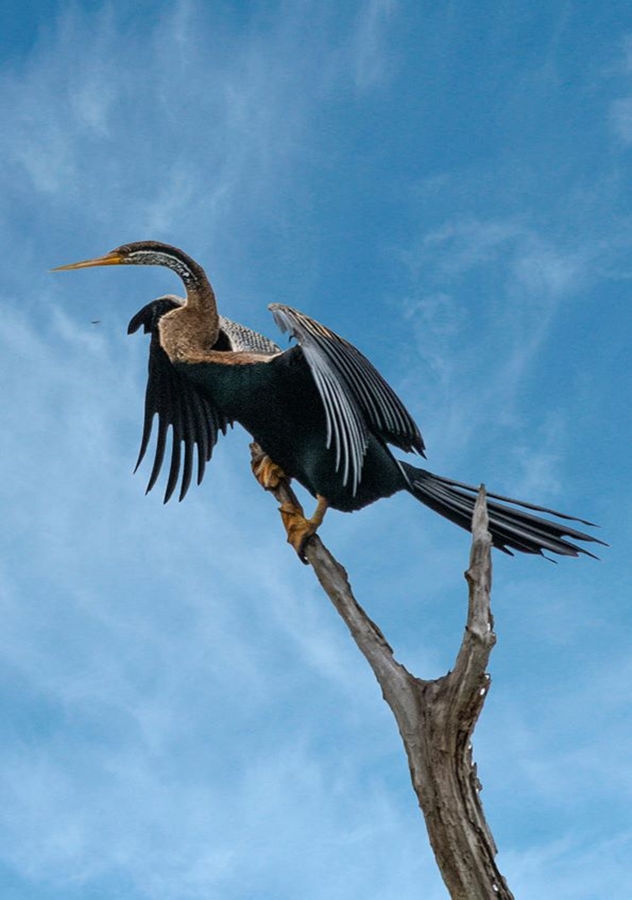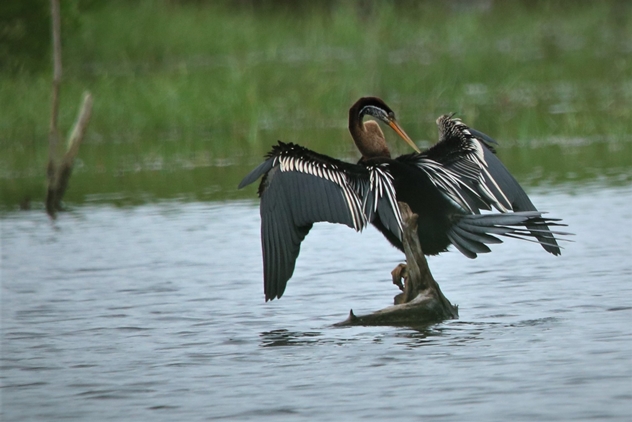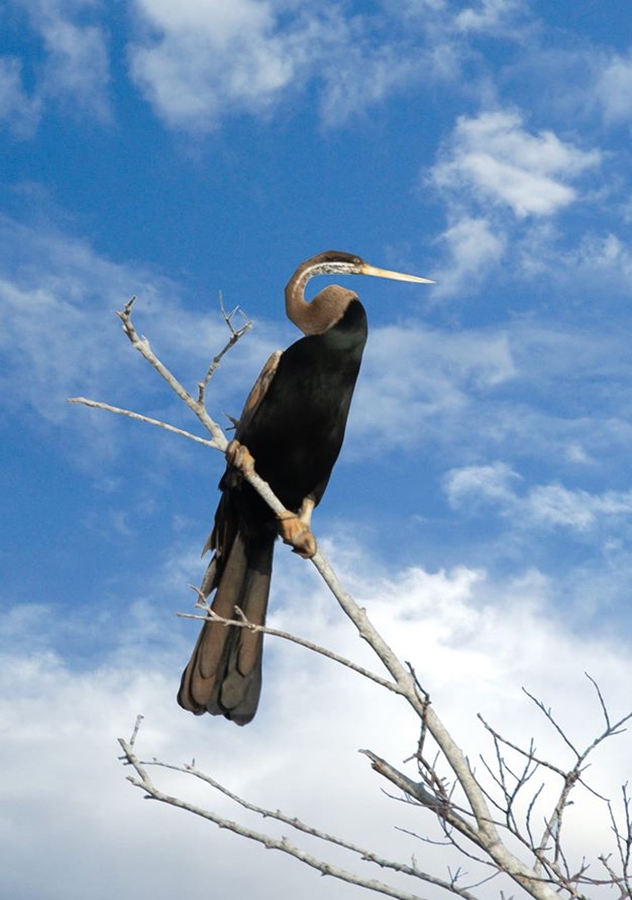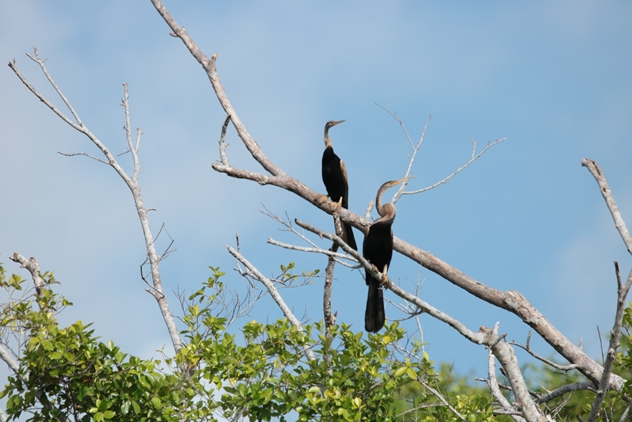The Oriental darter or Indian darter (Anhinga melanogaster) is a cormorant-like waterbird with a long, slender, snakelike neck, and a straight, pointed bill. It can be found in tropical South Asia and Southeast Asia.
With its body submerged in water, it hunts for fish, darting its neck to impale the fish underwater, bringing it above the surface, tossing and juggling it before swallowing the fish head first. The body remains submerged as it swims, with only the slender neck visible above the water, which accounts for the colloquial name of snakebird. It is often found perched on a rock or branch with its wings held open to dry.
The adult plumage above is black and the wing coverts and tertials having silvery streaks along the shaft. The crown and neck are brown shading to black towards the back of the neck. The underparts are blackish brown. A pale line over the eye and throat and a line running along the sides of the neck gives it a striped appearance. The iris is white with a yellow ring (brighter yellow in breeding birds) around it.
They build a stick nest platform on the nest tree which is usually surrounded by water. Several pairs may nest close to each other. The branch is flattened by the birds prior to the placement of the sticks that form the nest platform. The nest sites are defended from other birds with posturing and thrusts of the neck. The usual clutch consists of three to six spindle shaped bluish-green eggs with a white chalky covering that gets soiled over time. Both parents incubate the eggs, beginning after the first egg is laid. The newly hatched chicks are bare and covered with some down on the head. As they grow, they become covered in white down. The chicks feed by thrusting their heads down the throat of their parents.
Adults go through a synchronous moult of their flight feathers after the breeding season resulting in the loss of flying ability for a brief period of time. When disturbed from their perches during this period, they dive into the water below and attempt to escape underwater. This escape behaviour is also employed by chicks at the nest. They are very silent except at the nest where they produce grunts and croaks and a disyllabic chigi-chigi-chigi. Adults roost communally in trees close to or over water.
I have seen three oriental darters together at Kuala Baram Wetlands on many occasions but on my recent outings to the wetlands, I had only seen one. So far, the Kuala Baram Wetlands is the only place in Miri where I have seen these birds.
 CY@CY Says Welcome to my dreamscape. Where a Lim is also a Ling.
CY@CY Says Welcome to my dreamscape. Where a Lim is also a Ling.





